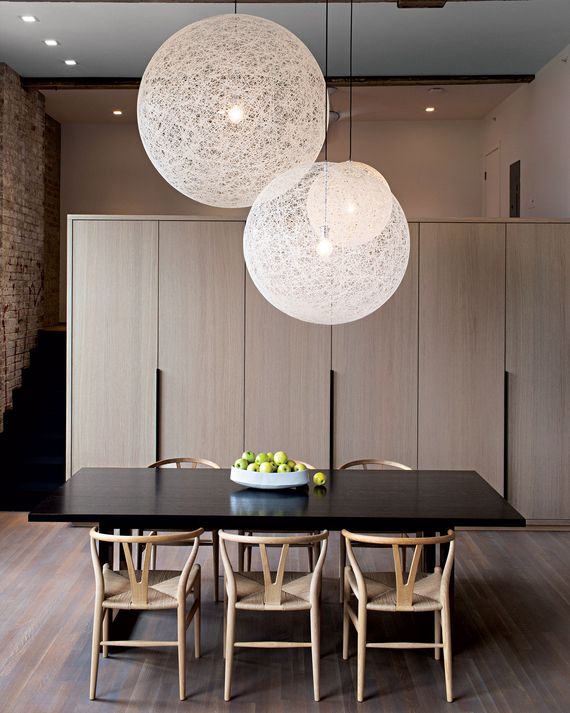
“Wouldn’t it be great if there were no walls?” says Liz Hoffman, a psychotherapist and NYC expat. This was the thinking, anyway, behind her original vision for her new home in a former electric-blanket-factory building in Beacon, the artist-filled town on the Hudson. Two years ago, Hoffman and her interior designer, Elizabeth Strianese, first assessed the weathered, graffiti-covered brick walls, the missing floorboards, and the giant holes where windows once had been — these were hardly setbacks, as the building’s developers allowed owners to design their own interiors. But while Strianese was not opposed to the idea of forgoing the walls, she made the slightly more practical call that a totally open loft would be too vast and not tailored enough. “Instead,” she says, “we came up with the concept of floating walls — dividers between the bedroom, living room, and guest sleeping loft.”
Another gentle pivot came by way of the full staircase that ascends to the rooftop garden. Strianese suggested it over the spiral alternative; the choice accentuates the unit’s 24-foot ceilings and doubles as a carved-out niche for the kitchen below. “There’s a lot of space-folding, I like to call it,” says Strianese of the large kitchen counters. “It’s like these islands kind of came out of the wall.” And the floating wall that encases the flat-screen TV and the fireplace has all the authority of blackened steel without the exorbitant price tag and weight; it’s built of Richlite, a compressed-paper material, then topped with a simple wax finish.
This kind of considered decision-making by Strianese and her architect partner, Annaliese Pew, helpfully streamlined the project. “Elizabeth ended up being a design therapist for me,” says Hoffman. The two were so often on the same page that Hoffman eventually said, “Don’t even show me choices” in the furniture selection. The one area in which Hoffman refused to yield control was the bathroom doors — or lack thereof. “No, no,” she says. “I need to be able to see the mountains from the bath.”
Interior designer Elizabeth Strianese oversaw the millwork on the floating wall of storage near the dining table, above, which is paired with classic Hans Wegner Wishbone chairs. “The Moooi lights are sort of like a bird’s nest or a cloud,” she says. “You can see through them, but they still have volume.” A guest sleeping area is beyond the storage wall.
*This article appears in the January 7, 2019, issue of New York Magazine. Subscribe Now!
More From Design Hunting
- Good Luck Trying to Resell This West Elm Coffee Table
- The Design Icon Who Inspires Oprah and Nancy Meyers
- The Selby’s New Book About Creatives With Kids at Home










